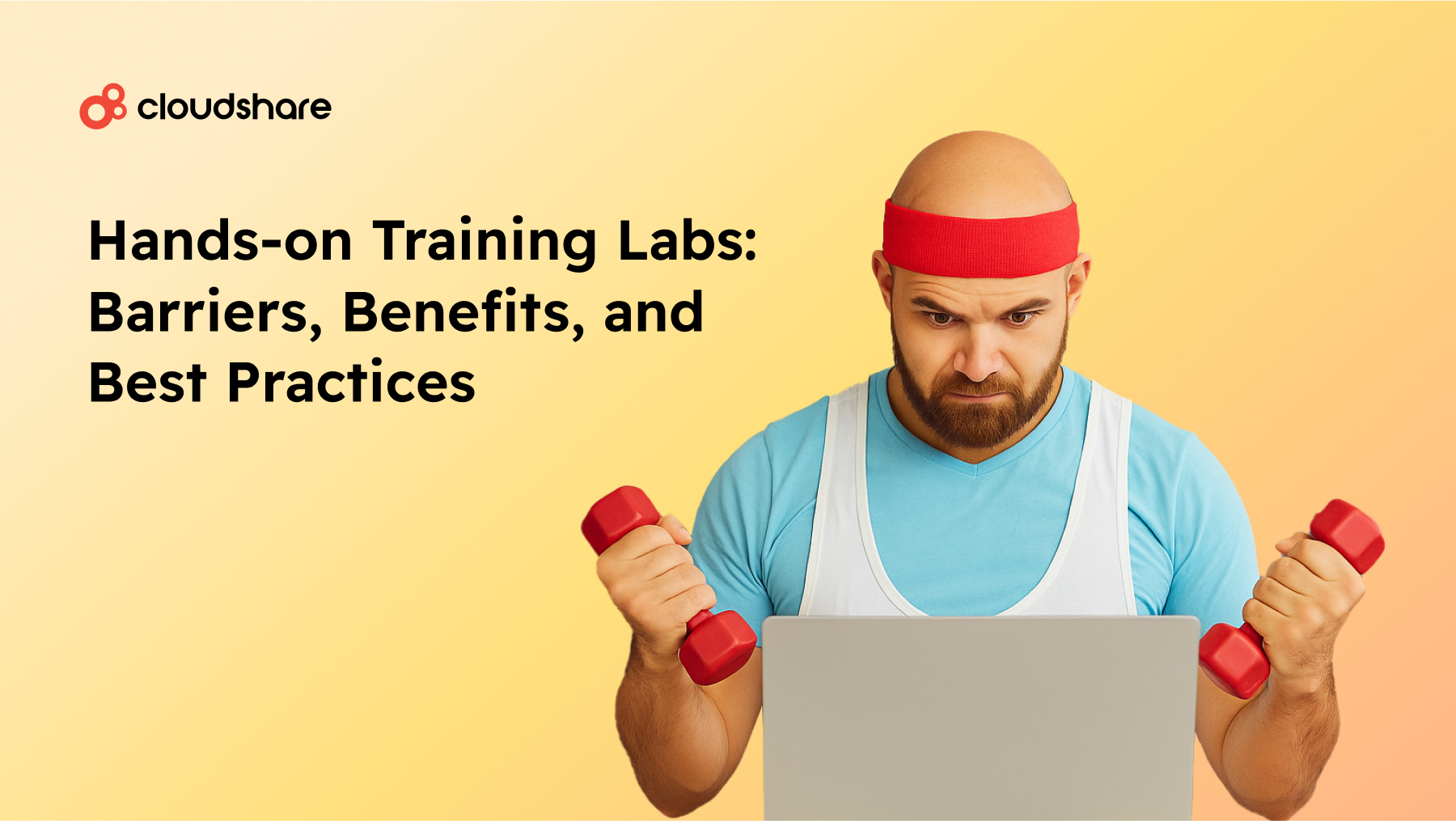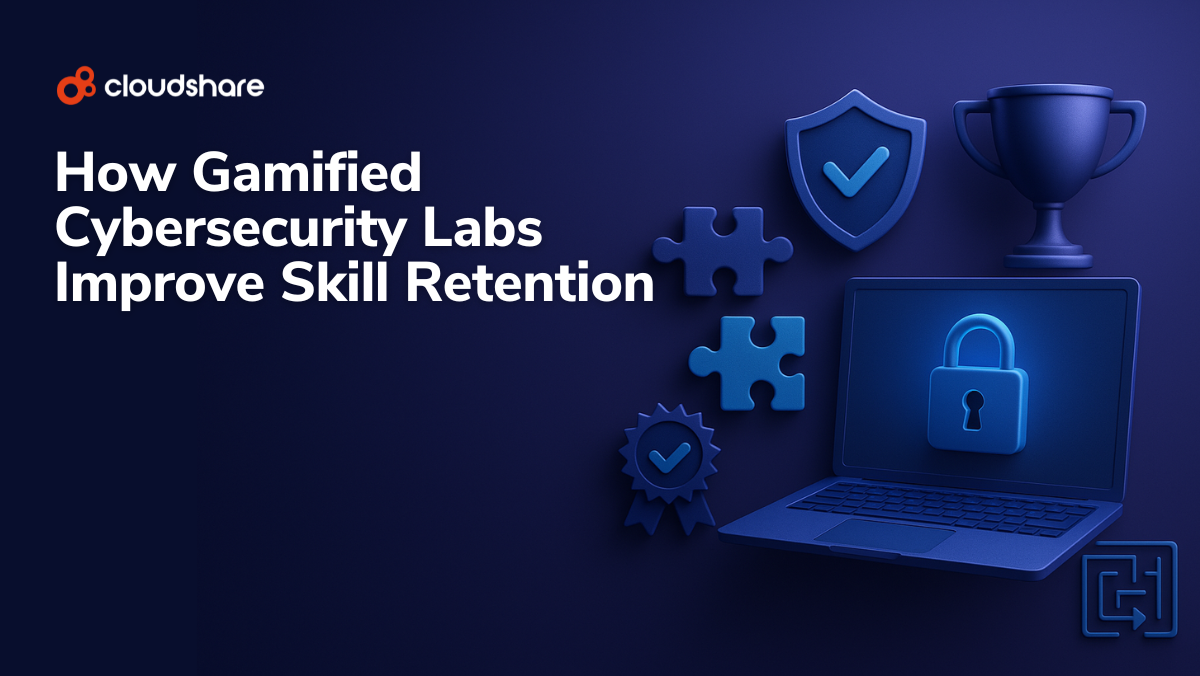
It’s axiomatic that hands-on training builds real skills faster than passive learning. Instead of watching videos or flipping through slides, learners actually apply what they’re learning—instantly turning theory into practice.
Instead of memorizing decks or textbooks, participants get an opportunity to actually put their knowledge to the test.
That’s the core of hands-on learning: real-world application over passive consumption. But delivering it at scale isn’t always simple, and that’s where virtual labs come in.
Key Takeaways
- Hands-on training is incredibly effective, but also challenging to deliver at scale.
- Barriers include infrastructure complexity, cost, and scalability.
- Cloud-based hands-on labs eliminate the barriers while maximizing the benefits.
What Is Hands-On Training and Why Does It Matter?
Hands-on training is basically a subcategory of learning that focuses on experience rather than knowledge. People participating in hands-on training are essentially “learning by doing.” This can take many forms, including:
- On-the-job training
- Simulation- and scenario-based learning
- Role-playing
- Behavior modeling
- Sandboxed experimentation
There are a lot of things you can’t really learn if you stick exclusively to the classroom. How to use software is one of them. Given that modern workplaces are constantly introducing new tools and platforms, hands-on training is now essential.
Common Barriers to Implementing Hands-On Training at Scale
A lot of what makes hands-on training effective also makes it traditionally challenging to implement. These challenges are only exacerbated for organizations with large or distributed teams:
- The infrastructure required to support hands-on labs is often extremely resource-intensive and challenging to integrate.
- Because they require specialized hardware, virtual environments come with both a significant capital investment and considerable maintenance costs.
- Coordinating and scheduling training sessions represent a significant logistical challenge.
- Physical hands-on training environments aren’t built to scale, and generally support only a few participants at a time.
The good news is that there’s an alternative. Cloud-based virtual labs sidestep most of the challenges associated with hands-on training. Through integration with virtual reality technology, they even provide immersive, realistic environments for use cases that previously required purpose-built equipment, like surgical training.
How Virtual Hands-On Training Labs Break Barriers
With a virtual hands-on laboratory, you don’t need to worry about physical infrastructure or equipment bookings. You can spin up as many virtual labs as you need, paying only for what you use. These virtual environments provide a number of other benefits, too:
- Real-time skill validation
- Seamless integration with solutions such as learning management systems
- Higher participation and increased motivation due to more accessible, engaging content
- Learners can make mistakes without putting production environments at risk
- Analytics and reporting capabilities help refine training content, provide feedback to learners, and help identify bottlenecks
Best Practices for Leveraging Hands-on Labs
If you want to start employing hands-on labs, you’ll need to keep a few best practices in mind.
- Make sure you choose the right vendor: look for one with transparent, usage-based pricing so you can take full advantage of the cloud’s innate scalability.
- Personalization is also essential: the platform you choose should support a wide range of customization options, allowing you to tailor content to each trainee’s needs and capabilities.
- Look for a solution with comprehensive analytics and reporting functionality: this data will be invaluable in both providing feedback to learners and further optimizing your training program.
Beyond that, many of the same best practices apply to virtual labs as to other training modalities. Make sure your training is aligned with business goals and that training tasks match real-world responsibilities while regularly reviewing and refreshing your content.
Remove the Roadblocks to Real Learning with CloudShare
Hands-on training delivers lasting, practical skills—and virtual labs make it much easier to offer those experiences at scale. By shifting to cloud-based environments, teams gain flexibility, reduce overhead, and give learners a chance to engage more deeply with the material.
With the right solution, you can create immersive, scalable training that’s easy to manage and makes an impact from day one.
Want to see how it works? Book a CloudShare demo to explore hands-on training labs designed for fast setup, rich analytics, and real results.
FAQs
How does hands-on training differ from traditional learning methods?
Hands-on training emphasizes direct, active participation in real or simulated environments as opposed to passive, static instruction. It results in higher engagement, better knowledge retention, and faster skill acquisition. It’s also excellent for building practical expertise, allowing people to learn through action rather than observation.
What are examples of hands-on practice in virtual environments?
Some examples of hands-on practice in a virtual environment include:
- Virtual reality simulations used for surgical training
- Scenario-based cybersecurity training
- A virtual sandbox in which an engineer can design, build, and test prototypes
Though they all focus on very different disciplines, all three of these examples allow participants to learn, apply, and practice new skills without putting live systems at risk.
What are the main barriers to implementing hands-on labs?
Traditional hands-on labs require considerable IT resources and typically come with high setup and maintenance costs. Organizations with large or distributed teams may find it difficult to scale, and integration with existing systems is frequently incredibly complex. Finally, keeping the labs up-to-date and secure involves a great deal of work.
For cloud-based hands-on labs, the only real barrier is finding the right vendor.
How do you evaluate the success of hands-on training?
Typically, success in hands-on training is measured through performance metrics like completion rates and skill validation scores, along with feedback from instructors or assessments. Virtual lab analytics can additionally reveal each participant’s strengths and weaknesses, allowing them to pursue additional training as needed.




